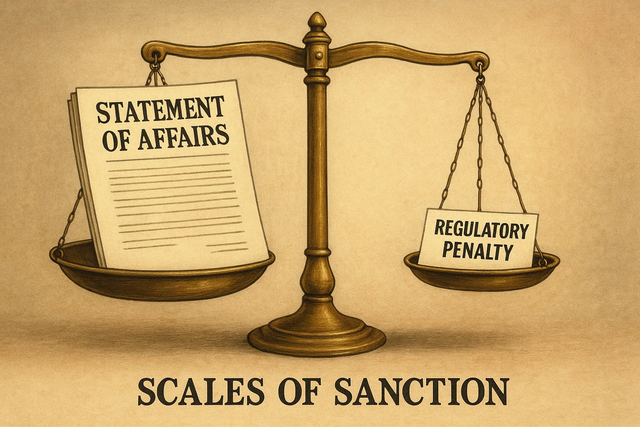Creditors say financial sanctions on insolvency practitioners too often resemble a minor expense rather than a deterrent. Complaints focus on disciplinary fines that can come in lower than a single Statement of Affairs fee commonly charged on an appointment. By contrast, directors facing investigation can expect the full force of the Insolvency Service. That imbalance matters when thousands of Scottish businesses are sliding from warning signs into formal insolvency risk.
Begbies Traynor’s Red Flag Alert for Q3 2025 records a steep deterioration north of the Border. Cases of advanced or “critical” distress in Scotland rose 82.5 per cent year on year and 17 per cent quarter on quarter, affecting just under 2,750 businesses. Across the UK, the increases were 78 per cent annually and 12.6 per cent sequentially, with more than 55,500 businesses now in this category.
Early‑stage or “significant” distress also worsened. Almost 34,300 Scottish firms fell into this bracket in Q3, up 9.4 per cent on a year earlier and 9.7 per cent on Q2. UK‑wide, significant distress rose 14.8 per cent year on year and 9 per cent quarter on quarter to almost 726,600 companies.
The breadth of the problem is clear. All 22 Scottish sectors tracked by Red Flag Alert saw annual increases in critical distress. Health and education posted a 150 per cent rise, affecting 115 businesses. Support services climbed 122 per cent to 463. Construction (426 businesses), bars and restaurants (142) and real estate and property (341) each recorded increases of more than 90 per cent.
On the significant distress measure, all but one sector recorded quarterly growth. Utilities stood out with a 76.7 per cent jump, affecting 318 businesses, while manufacturing rose 37.4 per cent to 981. Financial services and hotels and accommodation also weakened, suggesting pressure has moved well beyond discretionary retail.
Retail remains among the most exposed sectors amid the cost‑of‑living squeeze. Glasgow’s high street illustrates the strain, with traders reporting closures, shrinking margins and landlord arrears. Recovery prospects hinge on footfall, energy costs and whether lenders are willing to extend terms through the winter trading period.
Thomas McKay, managing partner for Begbies Traynor in Scotland, described the outlook as gloomy, pointing to UK inflation outpacing other major economies, stagnant real wages and the risk of rising unemployment despite a marginal GDP uptick in August. He urged tighter financial discipline from directors ahead of the Chancellor’s Budget on 26 November 2025.
Enforcement arrangements remain under scrutiny. Insolvency practitioners are supervised by Recognised Professional Bodies - including ICAEW, the Insolvency Practitioners Association, ICAS and CAI - with the Insolvency Service providing oversight. Creditors question whether peer‑regulation, and the value of sanctions imposed for breaches, is sufficient to change behaviour when cases go wrong.
The comparison most frequently raised is stark: a single Statement of Affairs fee on one case can exceed the fine levied for rule breaches in another. If directors attracted only token penalties for failures, creditors would rightly protest. The same expectation of meaningful deterrence applies to the profession tasked with safeguarding creditor interests.
For suppliers and landlords exposed to Scottish retail failures, the immediate priorities are practical. Seek itemised time costs for Statement of Affairs and investigations work, insist on clarity over fixed versus hourly charging, and press for early, open marketing of stock and fixtures to avoid value erosion. Challenge any connected‑party proposals at once and demand evidence of proper market testing.
Directors facing the Red Flag signals should act early. Keep PAYE and VAT as current as possible, approach HMRC proactively for Time to Pay before arrears crystallise, and obtain genuinely independent advice with a clear conflicts statement from any proposed office‑holder. Build cash‑flow scenarios that assume energy and borrowing costs remain elevated through winter.
The numbers point to a hard winter for Scotland, particularly in consumer‑facing trades. The 26 November Budget will set the fiscal tone, but the immediate test for stakeholders is whether regulators match economic reality with sanctions that deter misconduct. Inside Corporate Insolvency will track case outcomes and fee narratives as Q4 unfolds.
